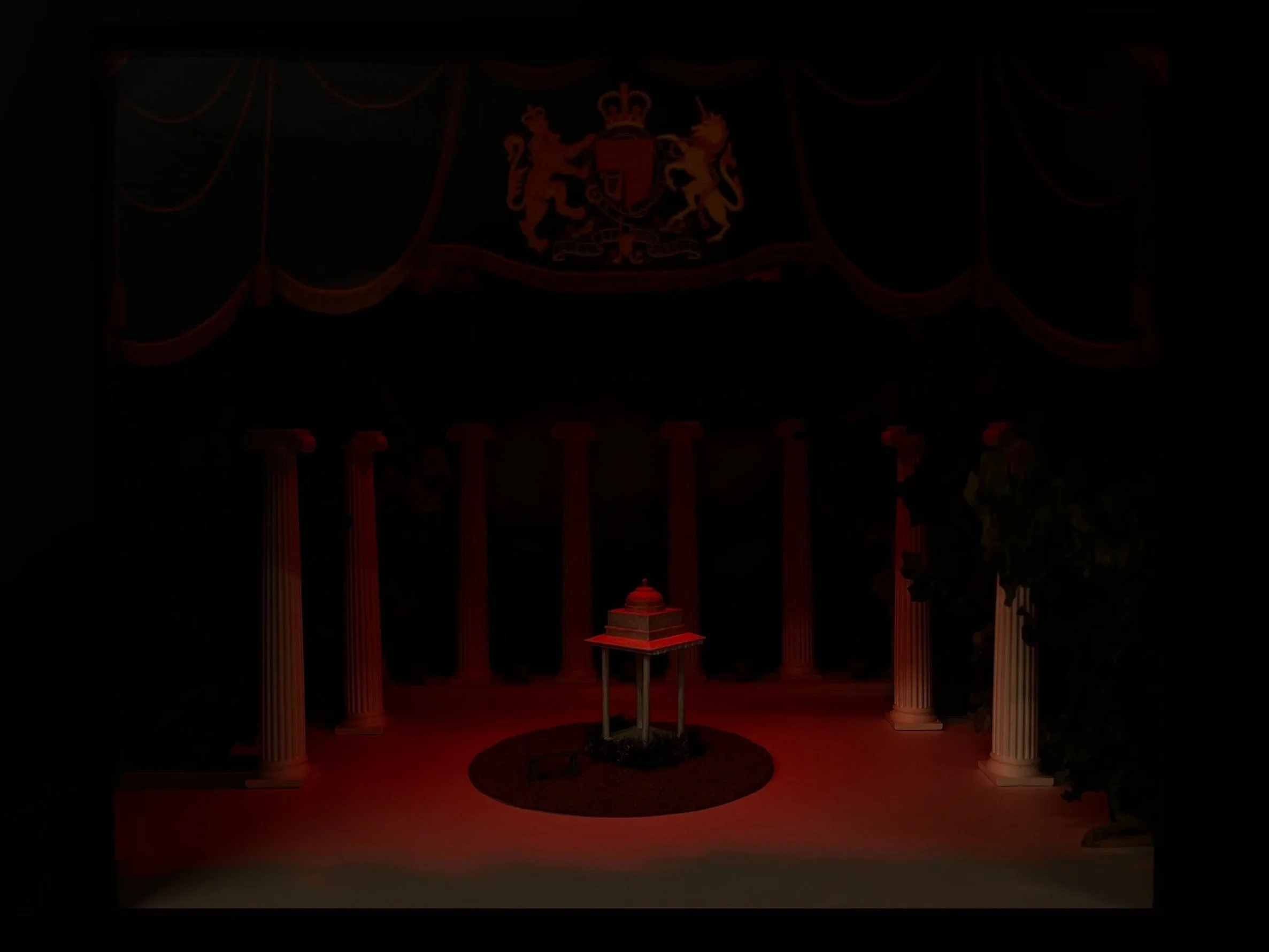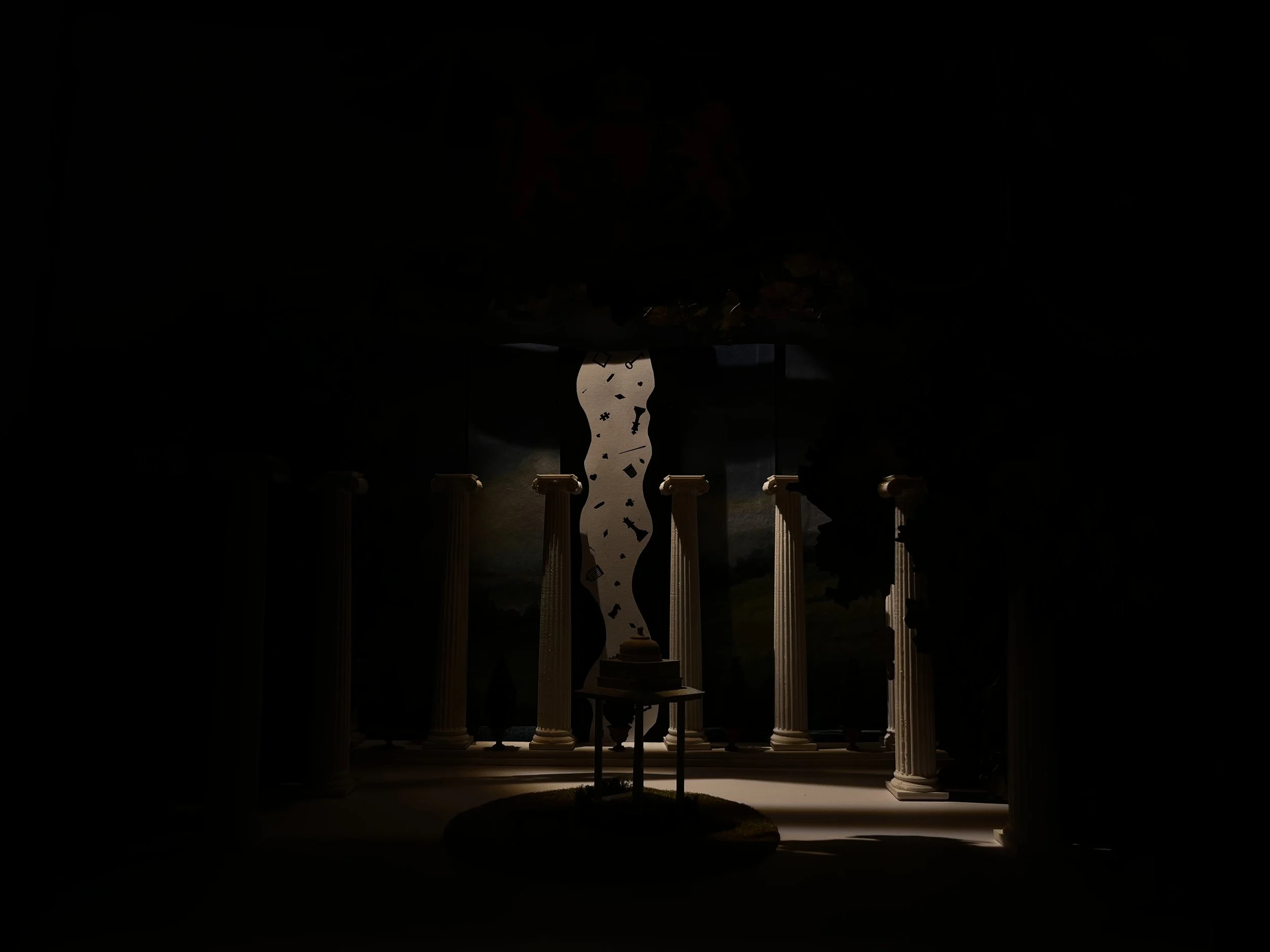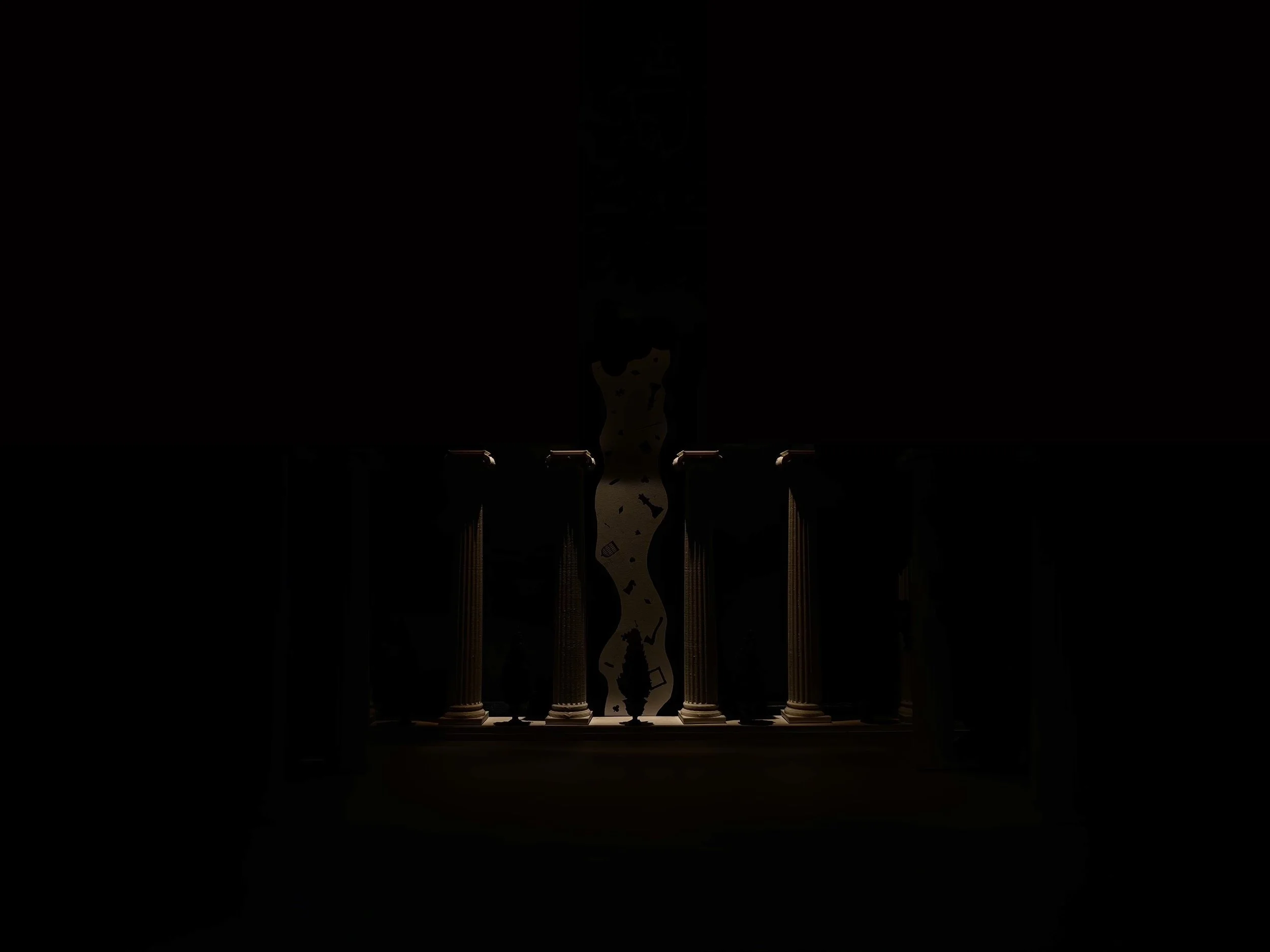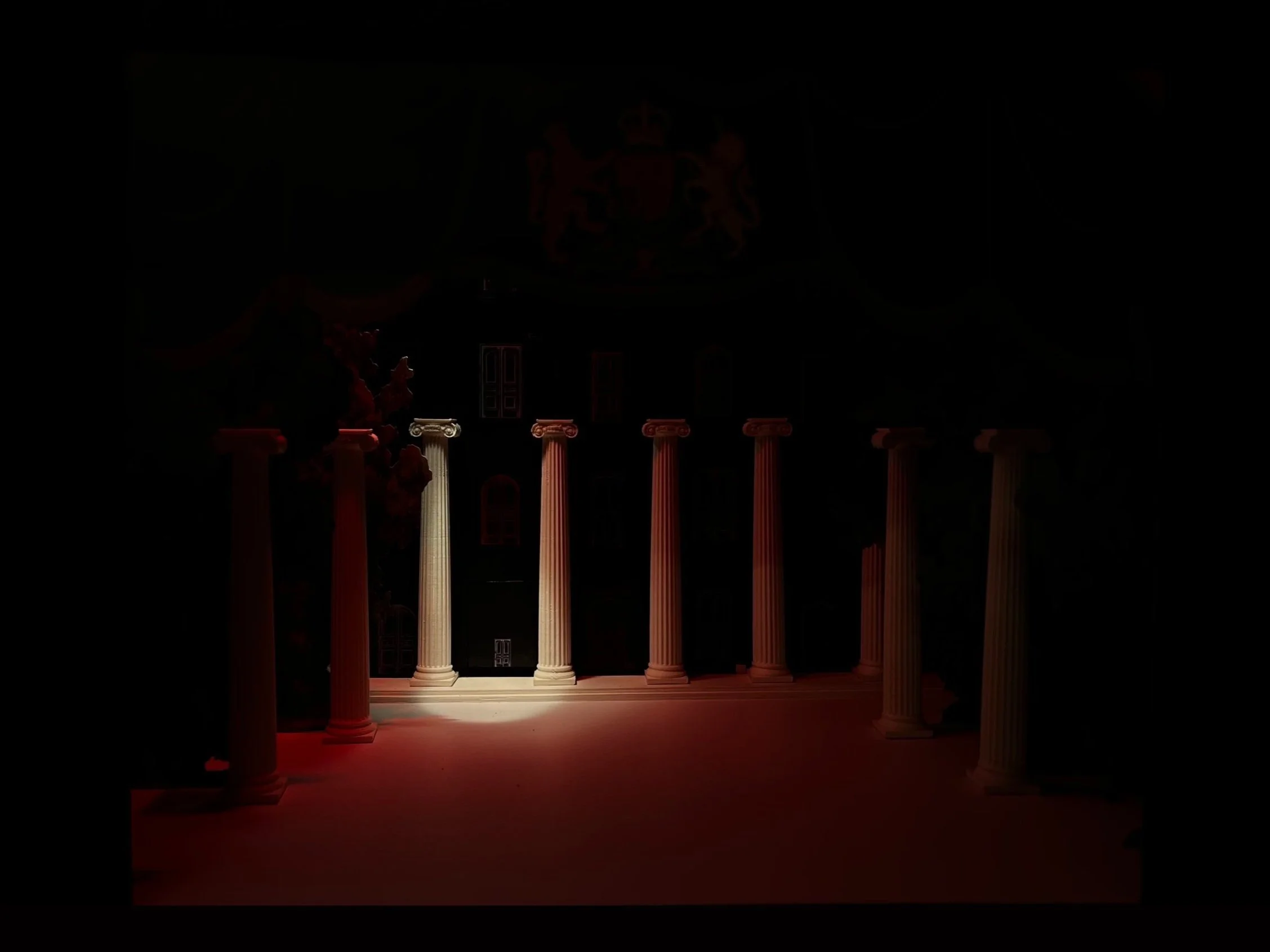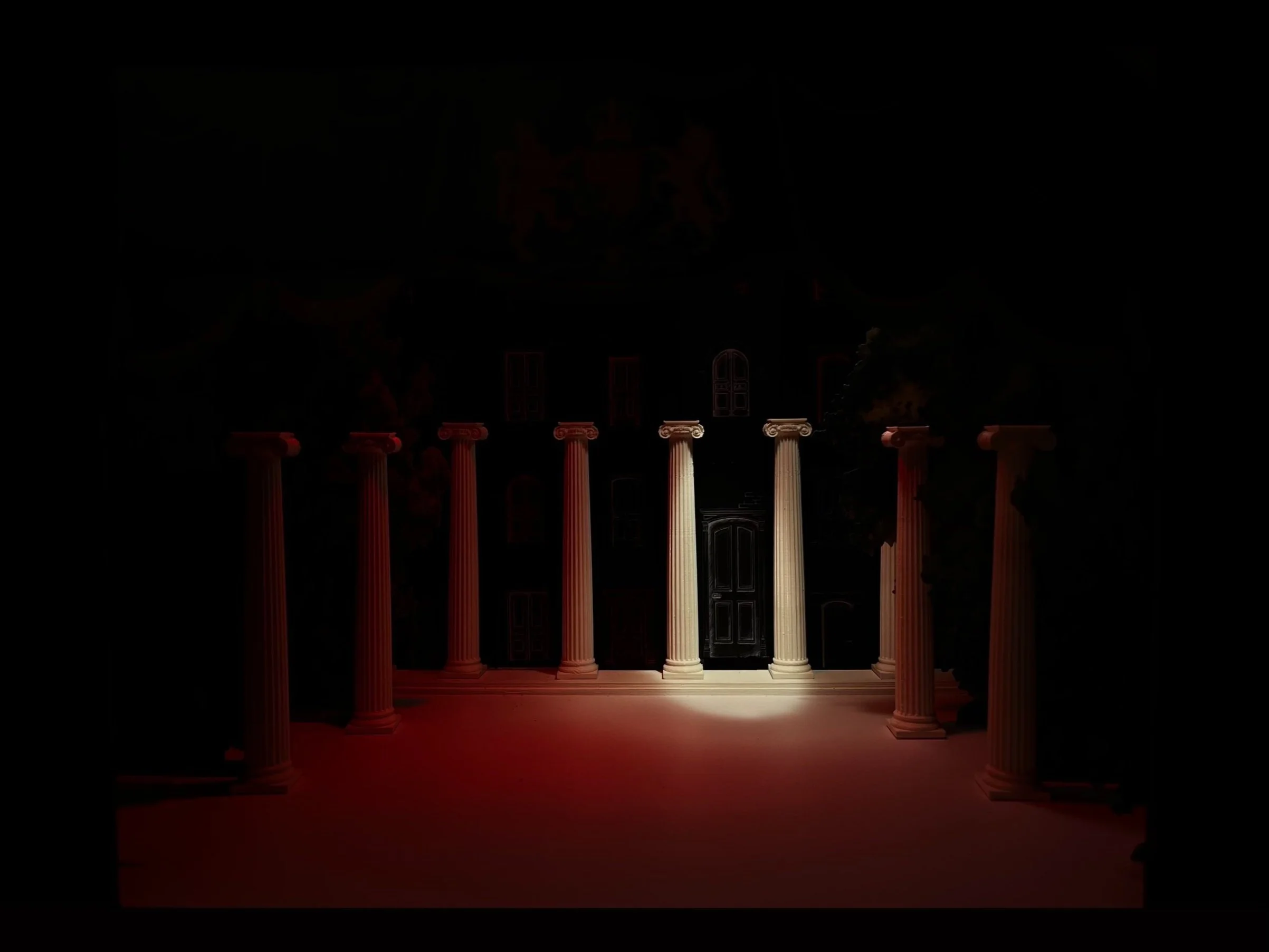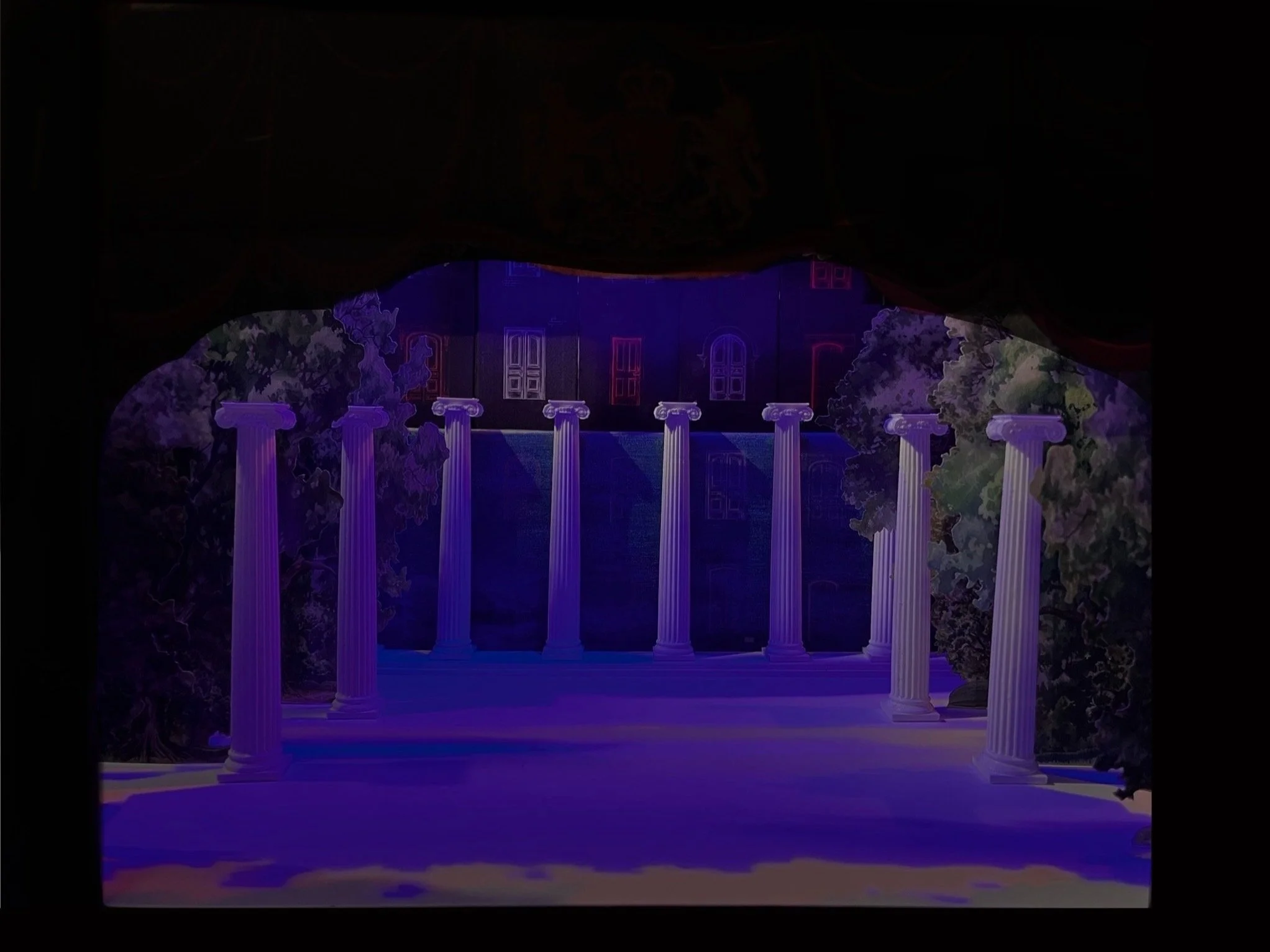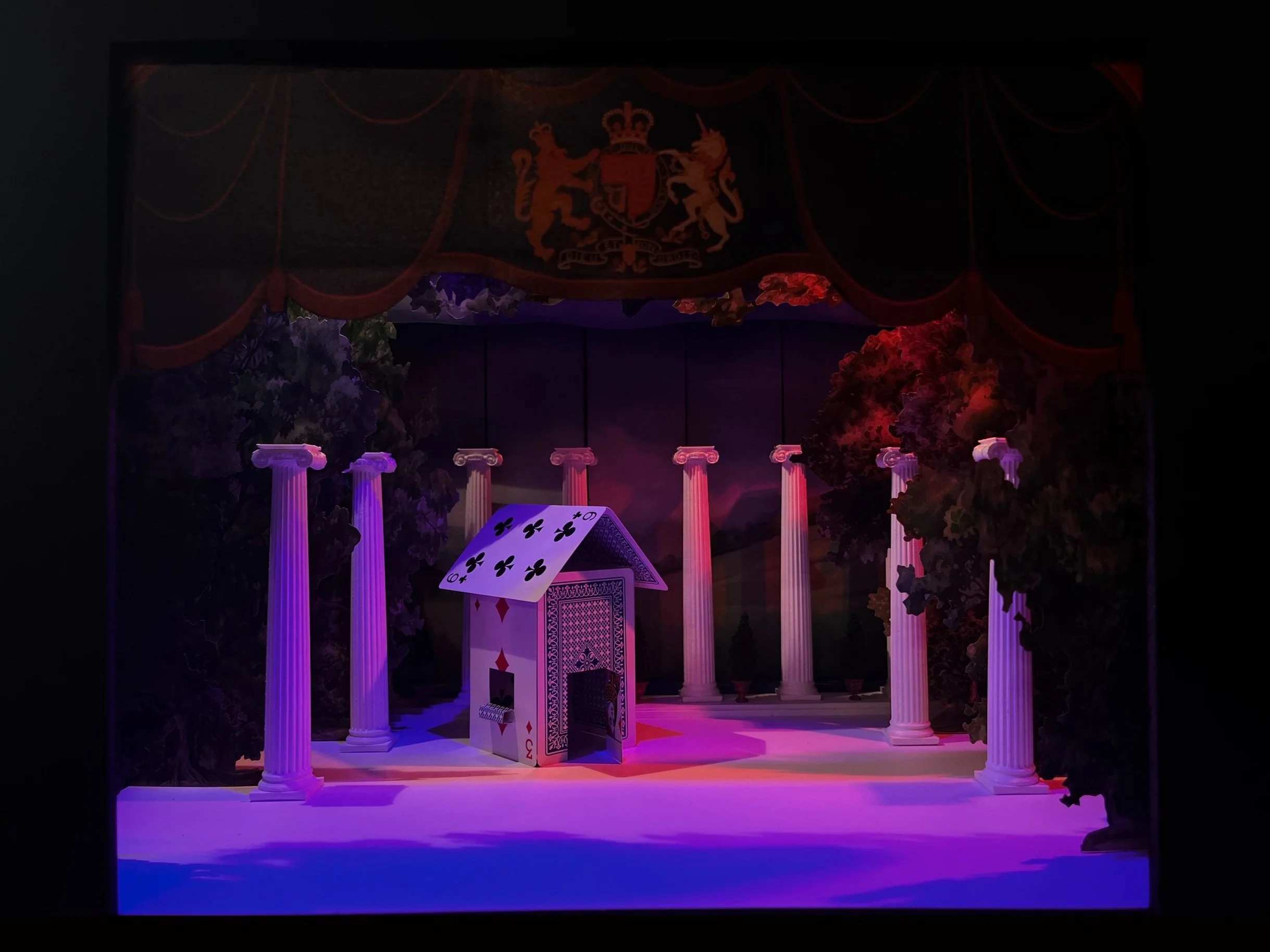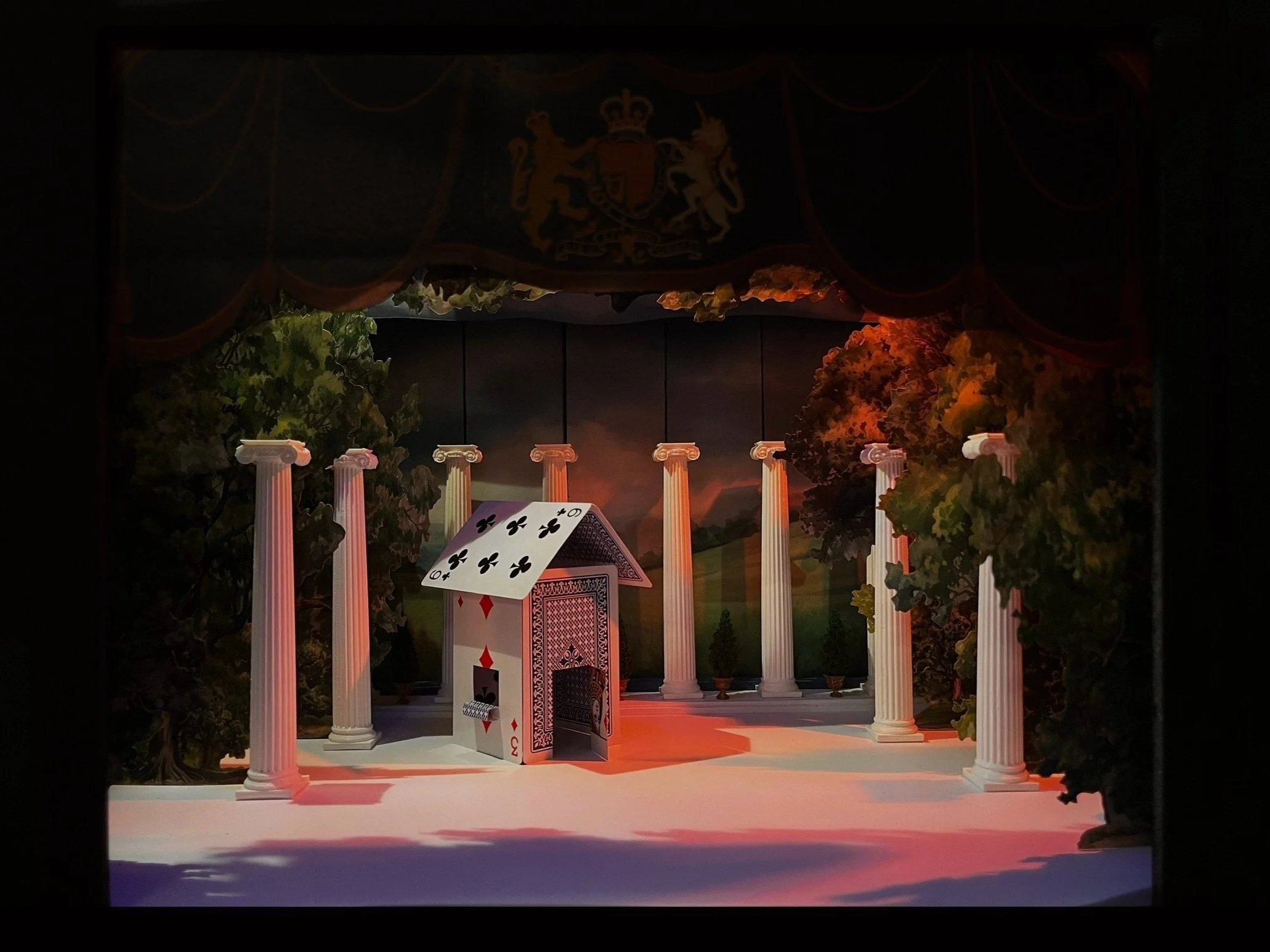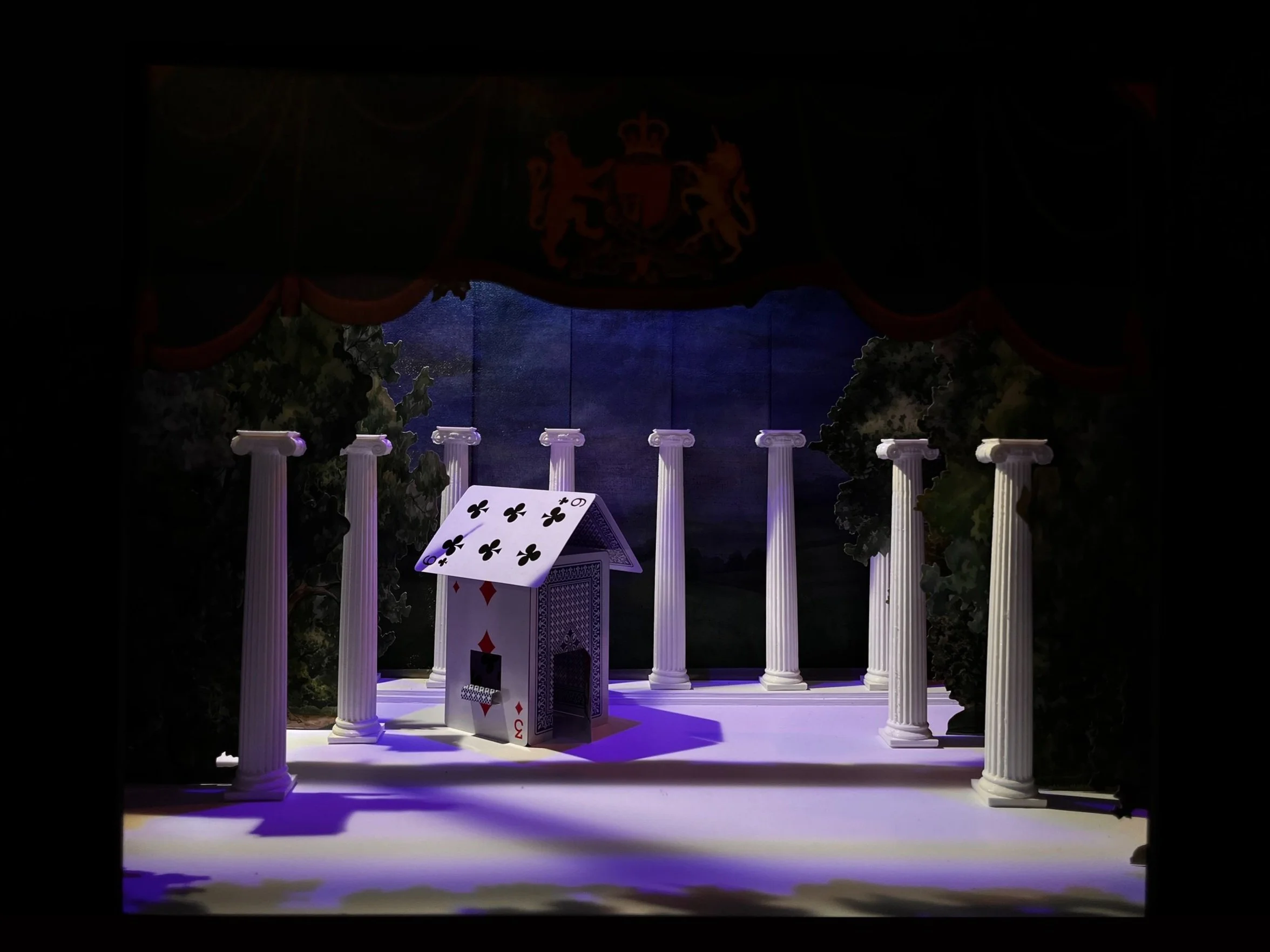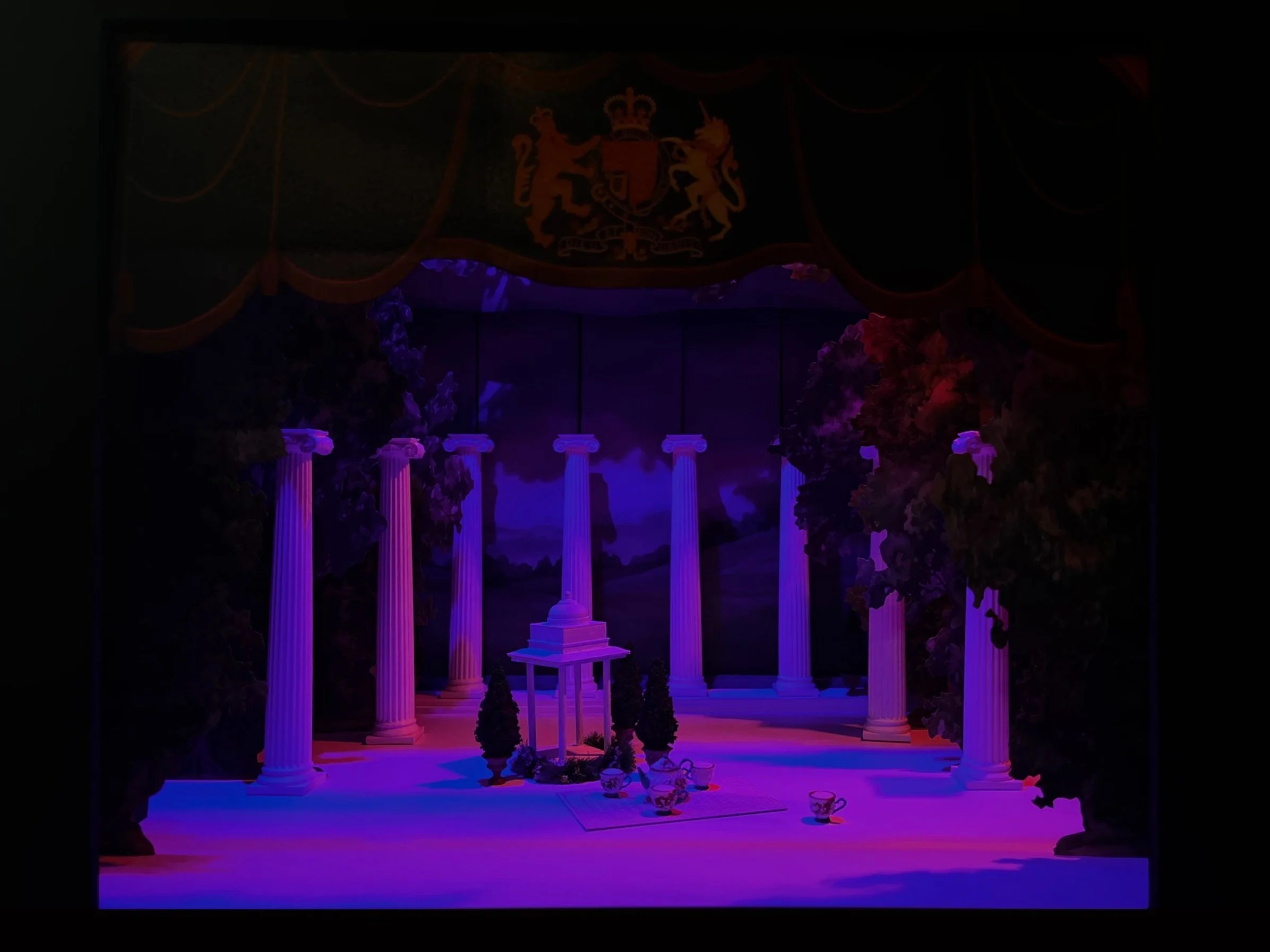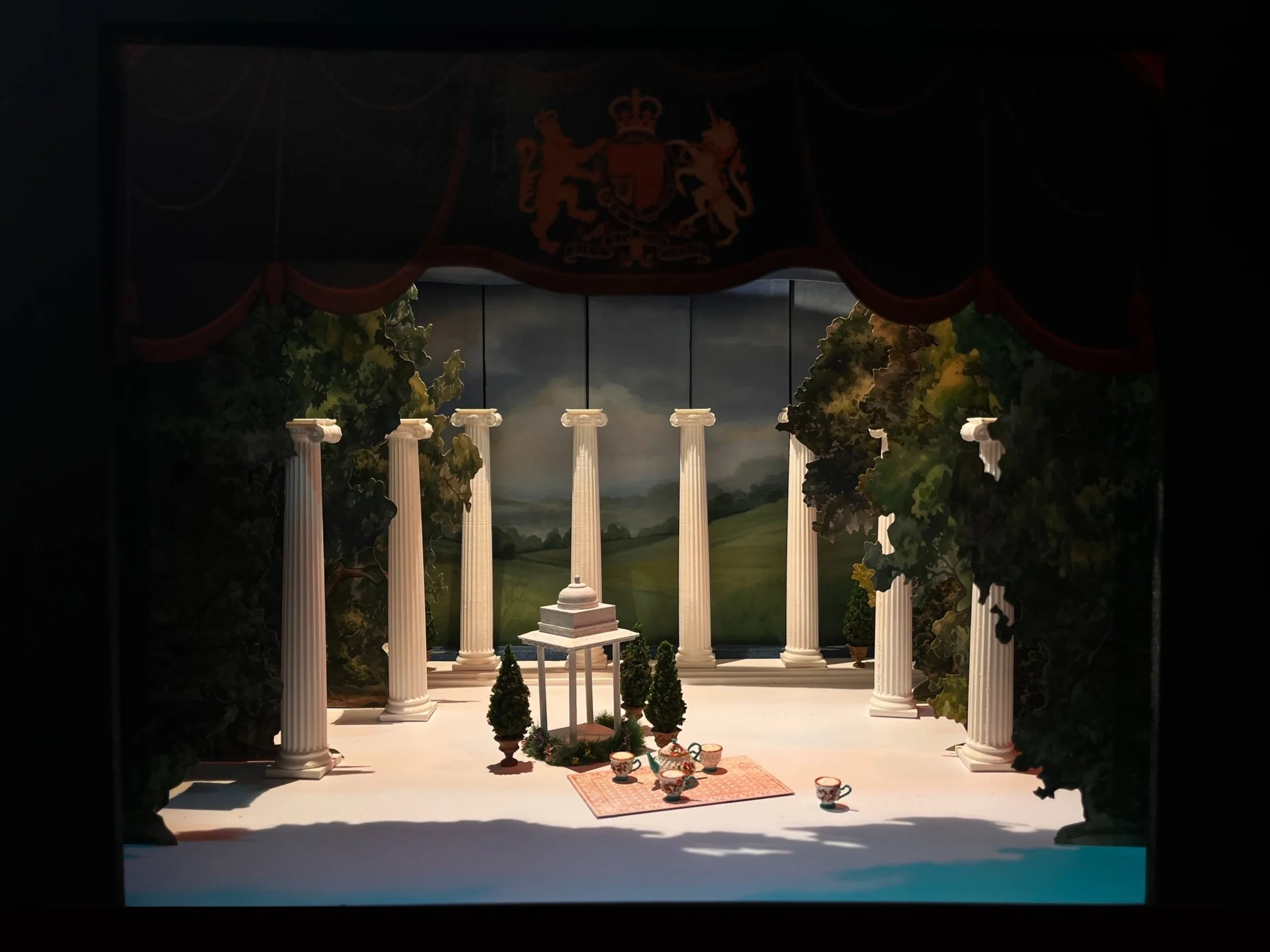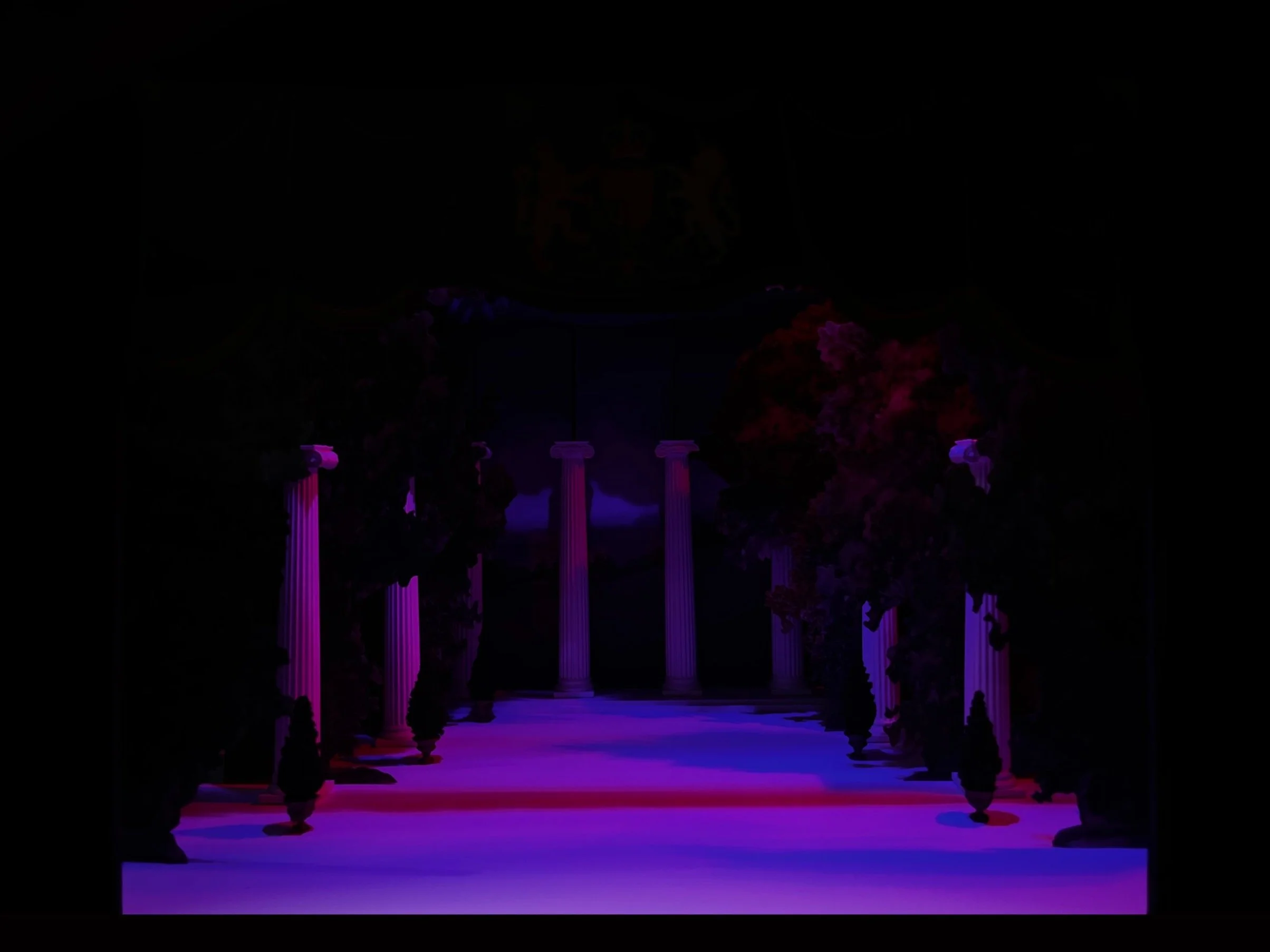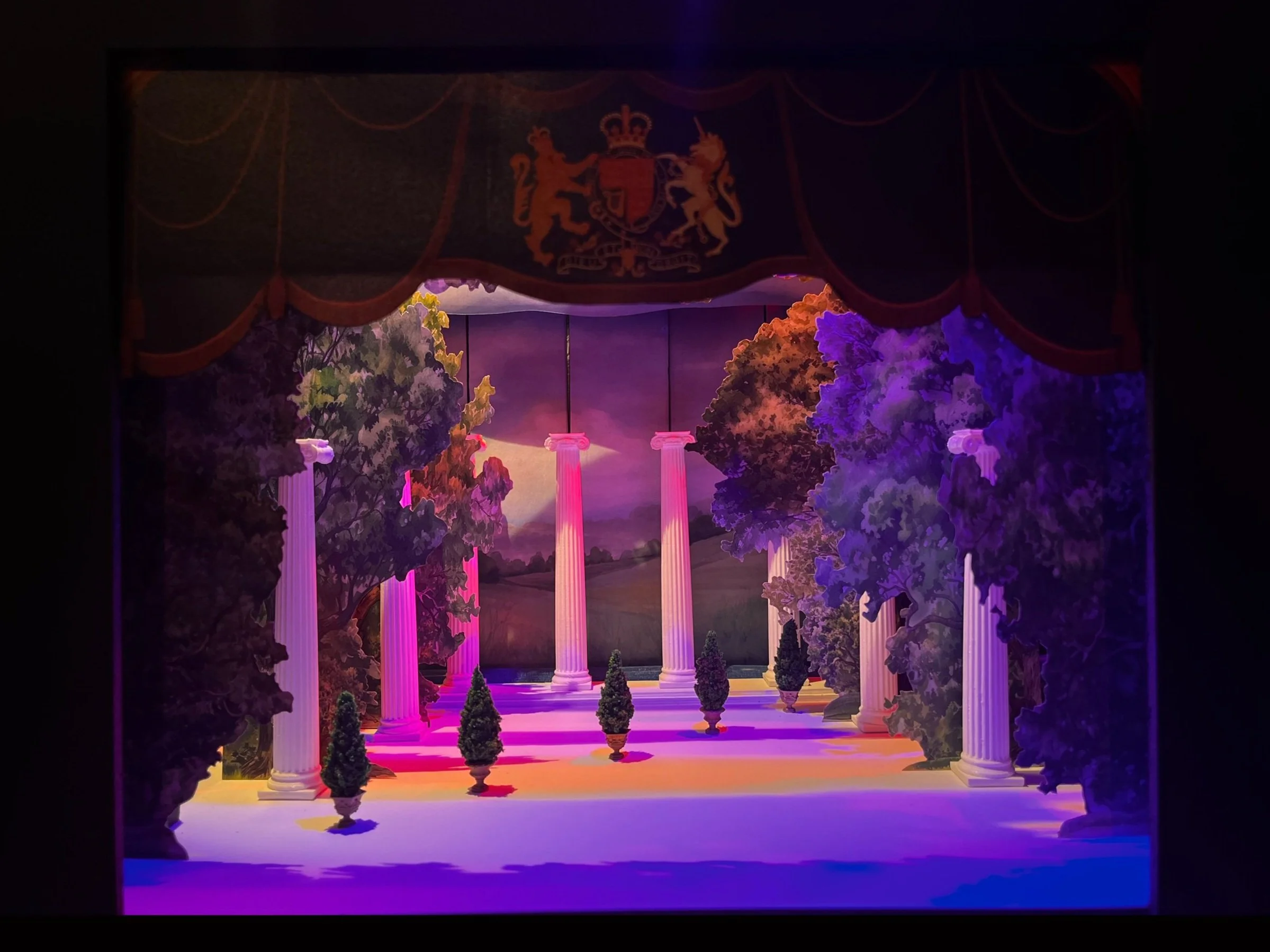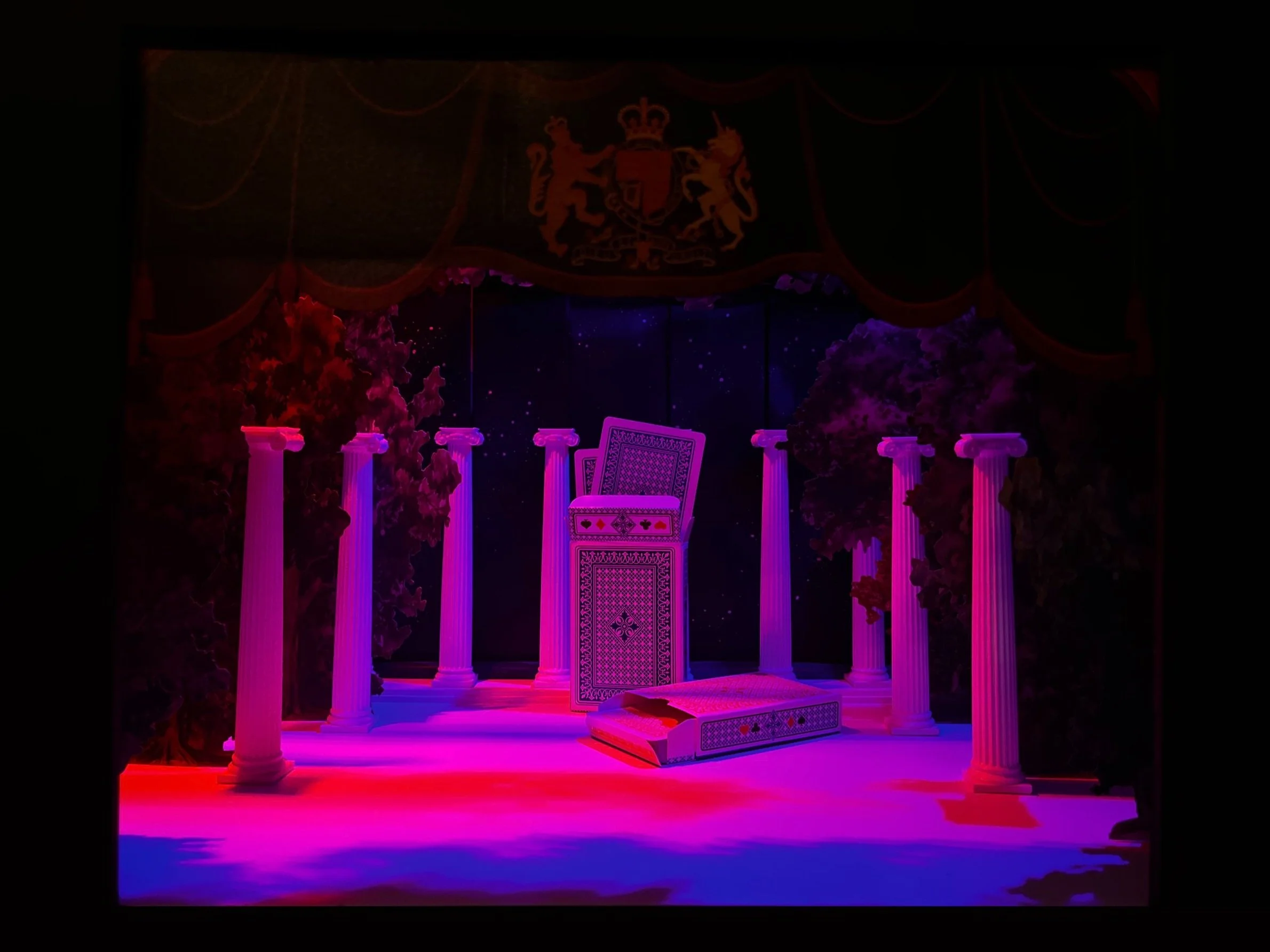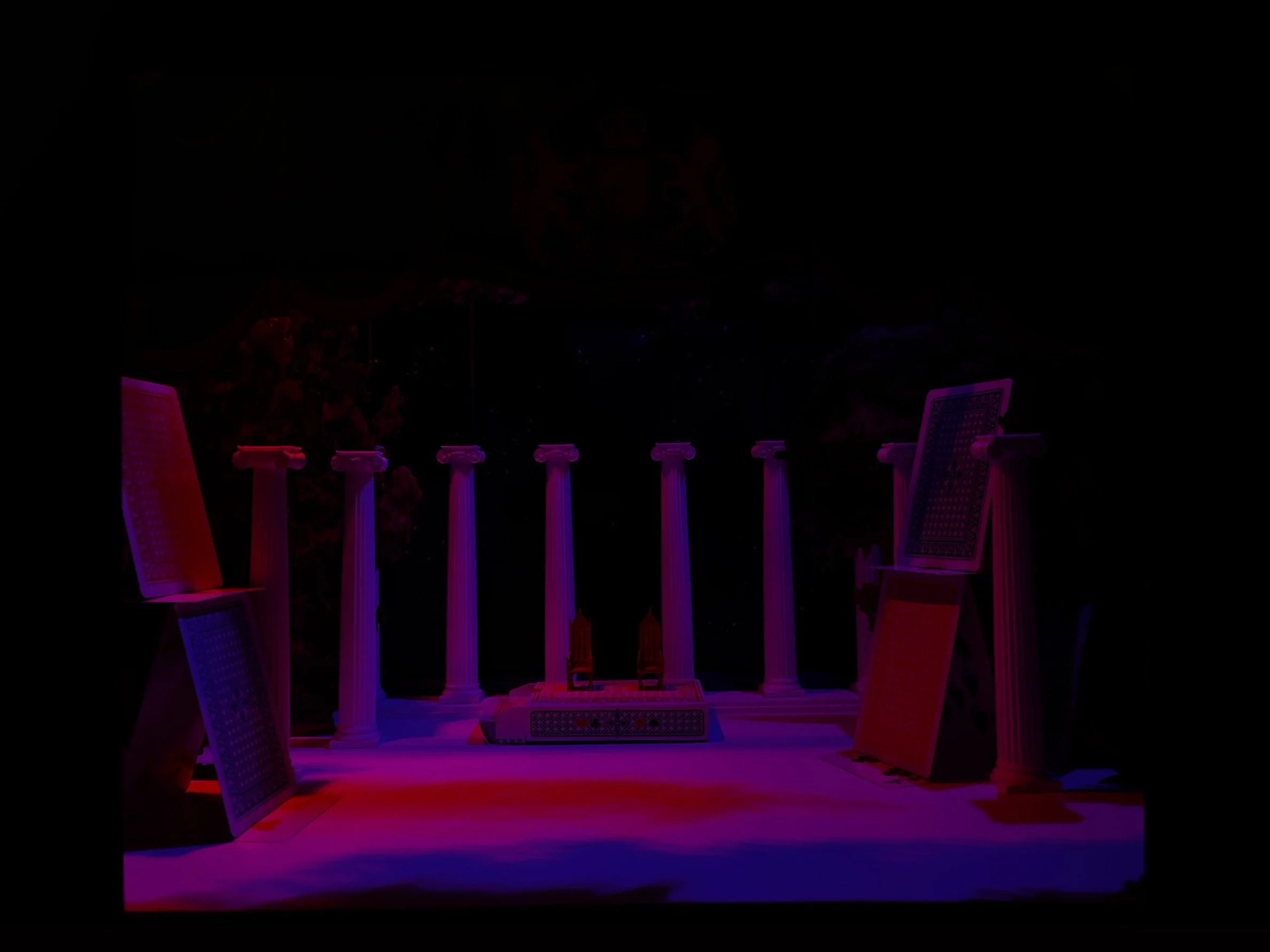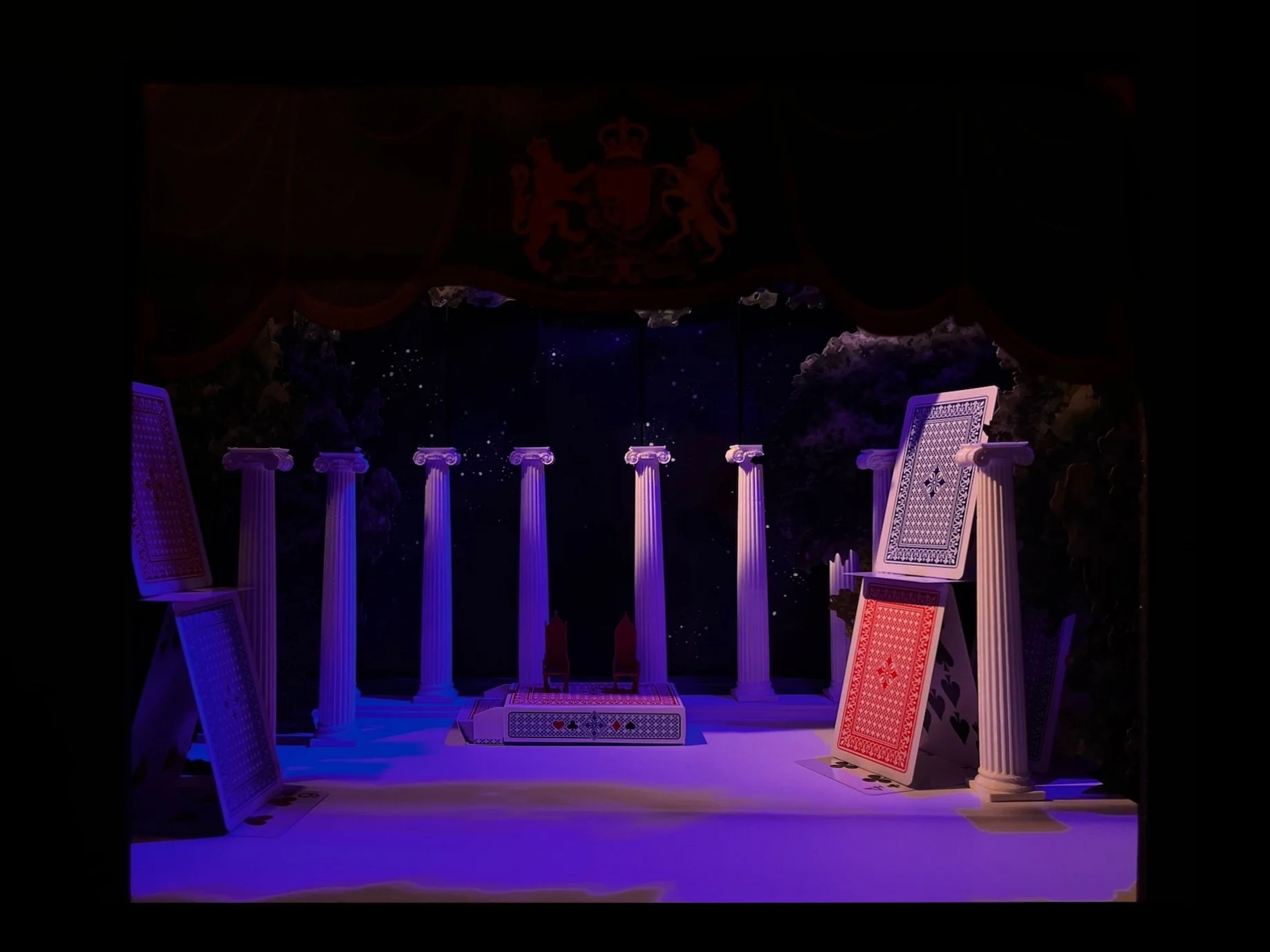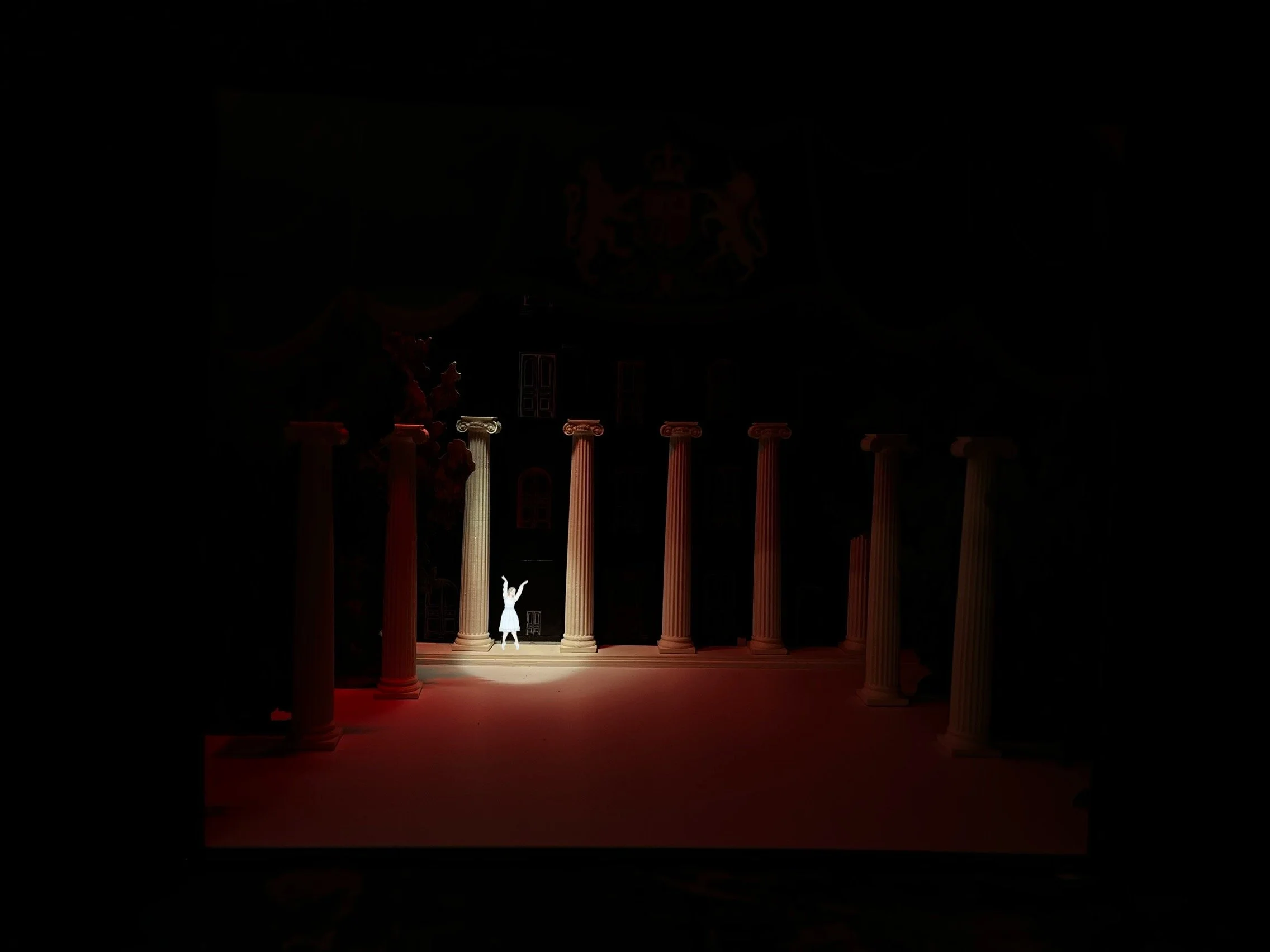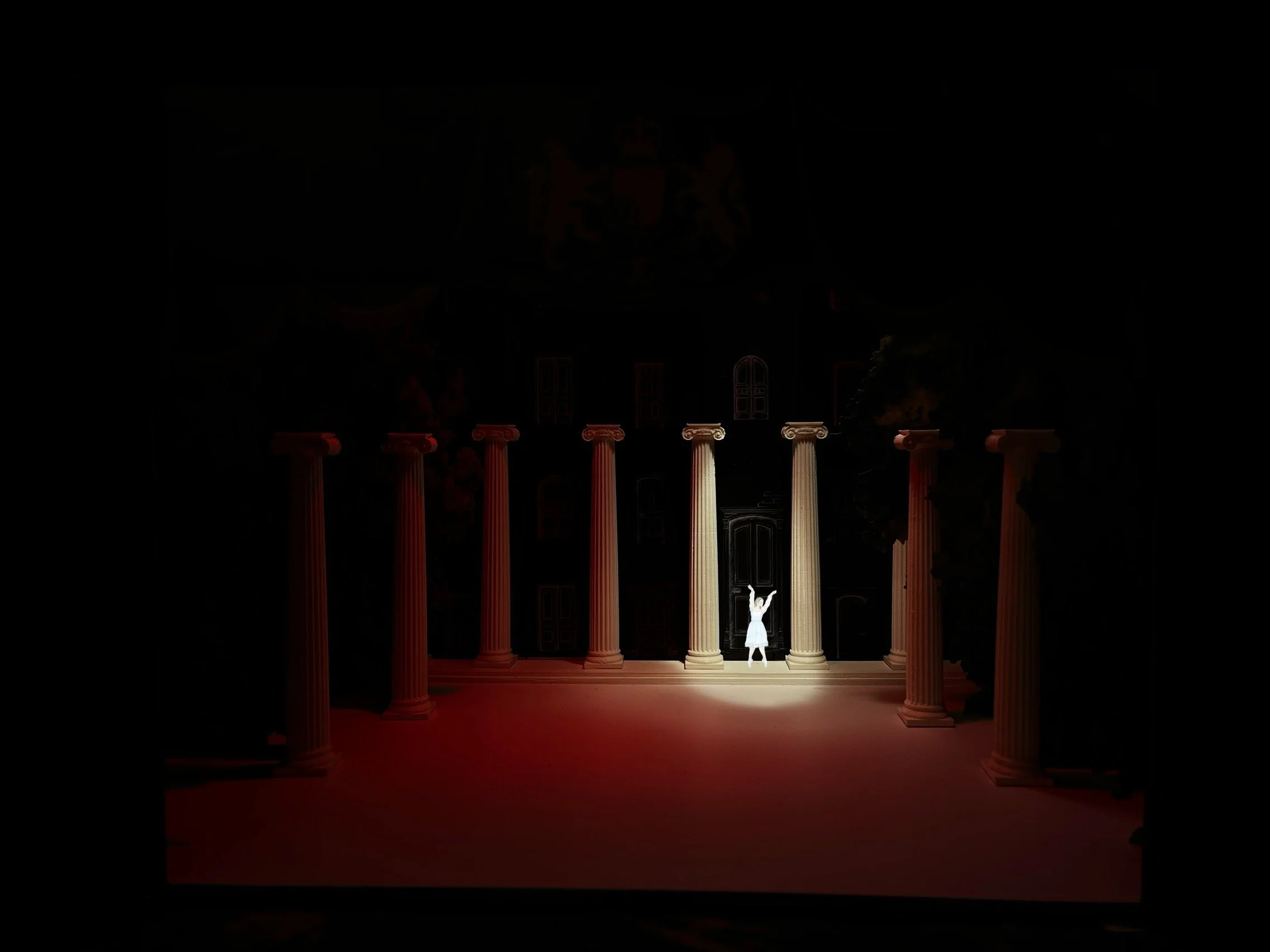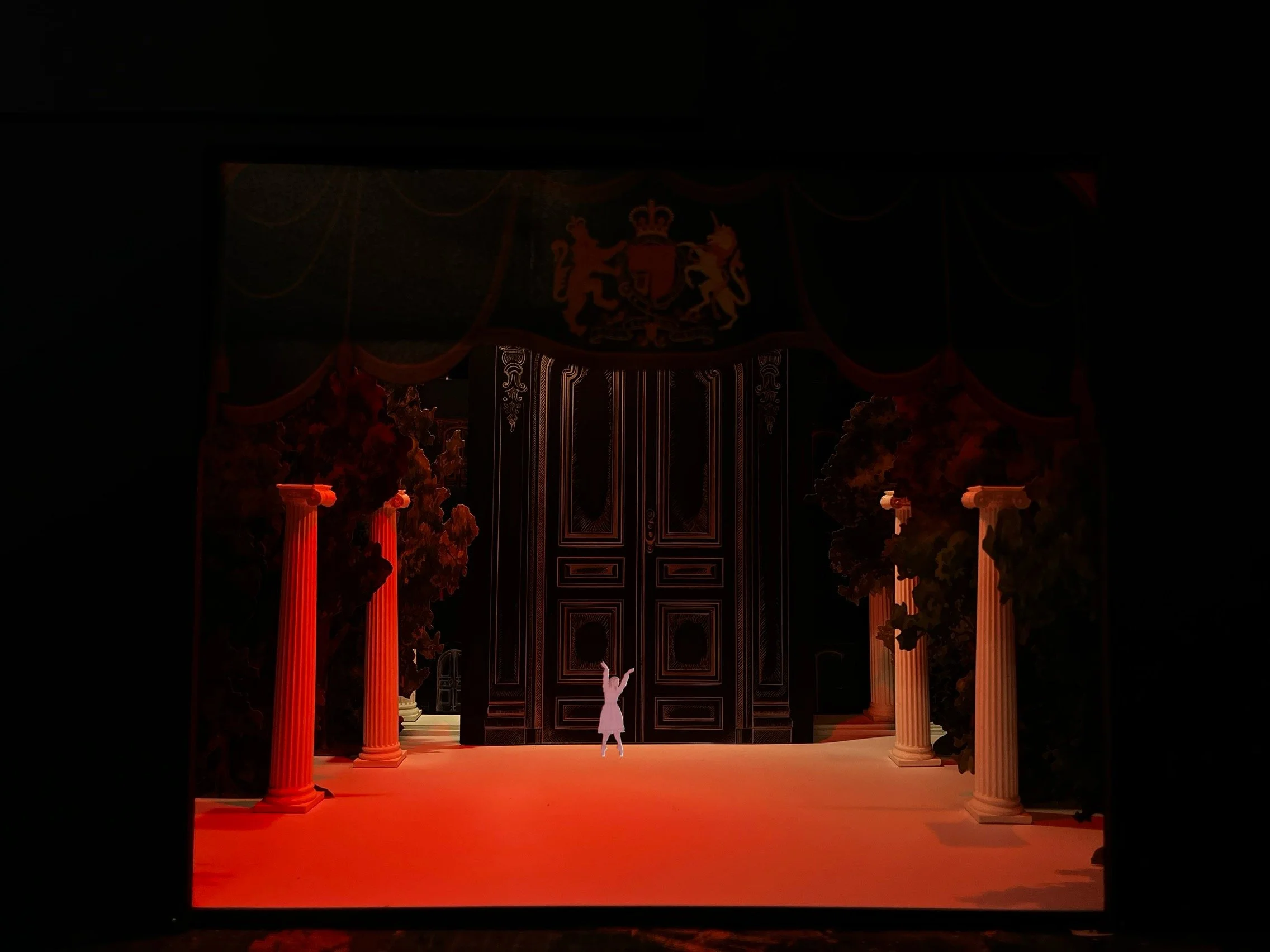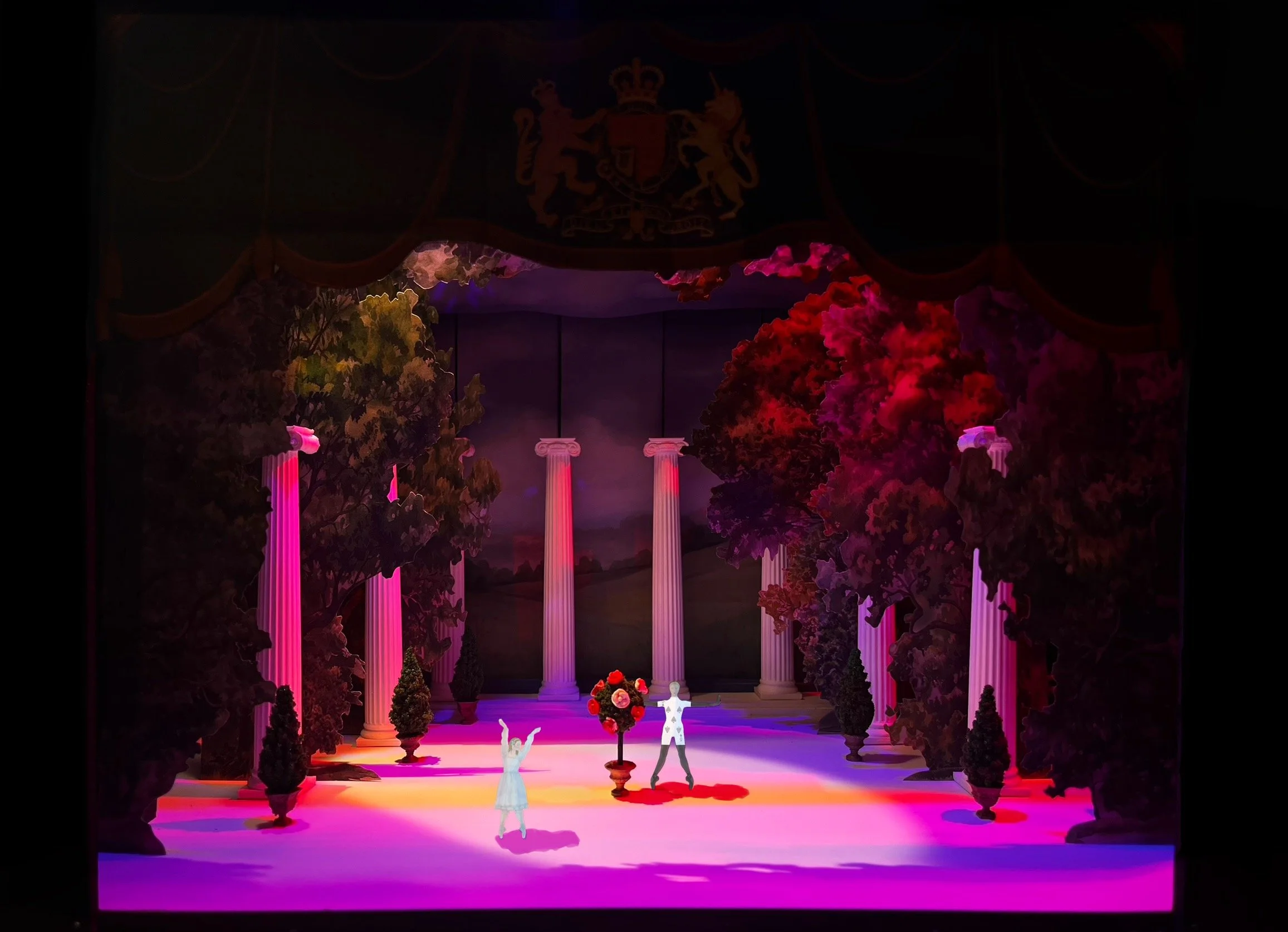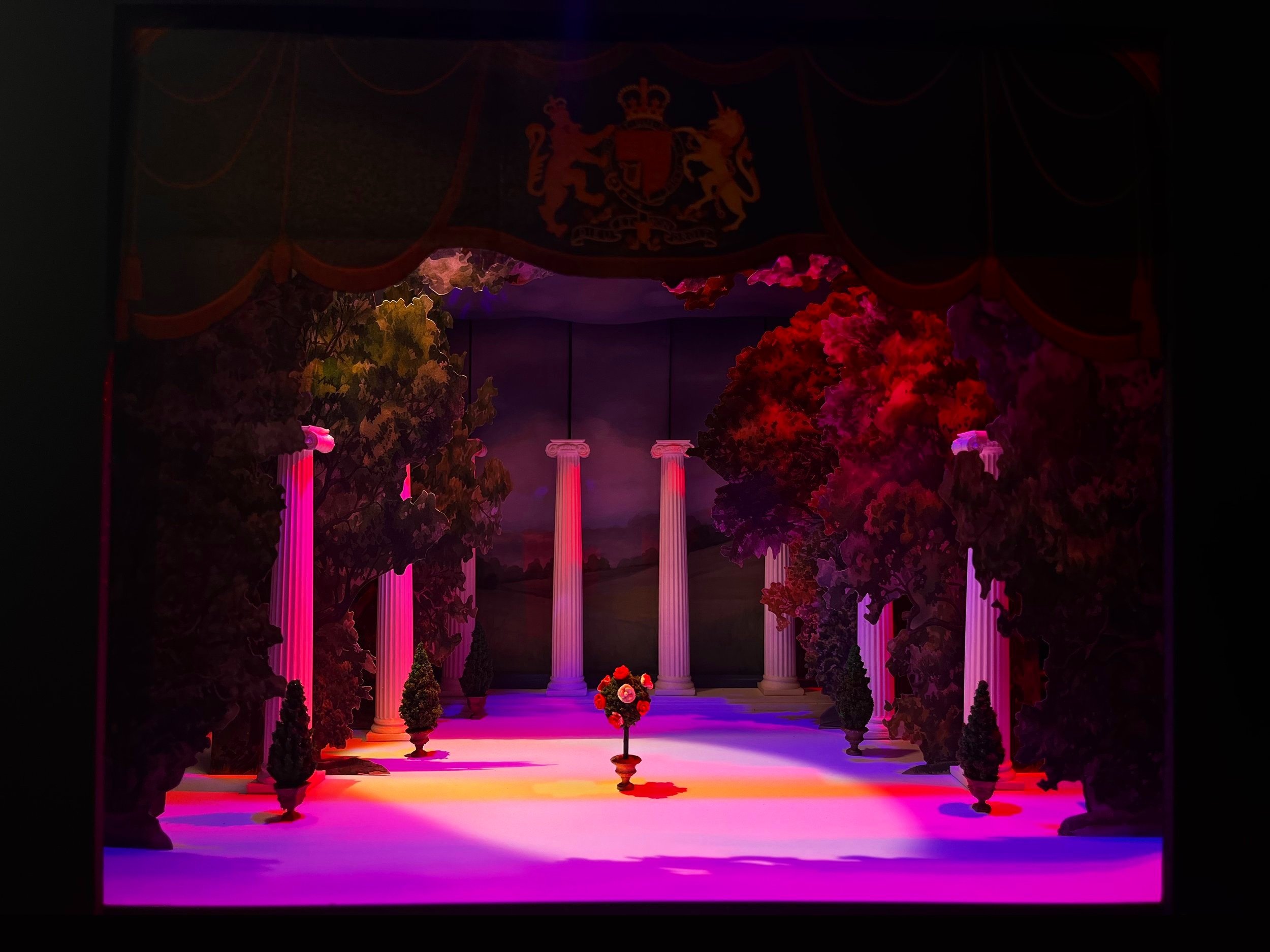
Alice's Adventures in Wonderland
Master's Degree dissertation, Practical Component
Margaret Steinbach, Designer
Adapted from the 1865 novel by Lewis Carroll
Developed Summer and Fall 2024 for the choreography of Christopher Wheeldon and musical score by Joby Talbot at the Royal Opera House stage at Covent Garden

“‘If there’s no meaning in it,’ said the King, ‘that saves a world of trouble, you know, as we needn’t try to find any. And yet I don’t know… I seem to see some meaning in them after all.’”
— Chapter 12, ‘Alice’s Evidence’ from Lewis Carroll’s Alice’s Adventures in Wonderland (1865)

I am fascinated with the relationships between the Ancient Greek theatrical tradition and Western conventions, particularly how Greek mythology inspires or altogether provides the narratives and themes employed throughout the opera and ballet corpus. However, female characters contained within mythology and these related theatrical forms are repeatedly victims of sexism, misogyny, and gendered violence, represented as submissive lovers or monstrous manipulators who exist to further the stories of men. Therefore, I sought to invert the traditional employment of Greek mythology, utilising it as a feminist device; the fusion of Greek mythology and the cultural placement of Carroll’s Alice, pulls from the traditions of Victorian classical burlesque, a form which called for the performance of feminocentric Greek myths via female performers in both traditionally male and female roles, in order to question the confines of femininity and womanhood, critique norms, and protest misogyny and sexism within both the original narrative and society.

costume drawings
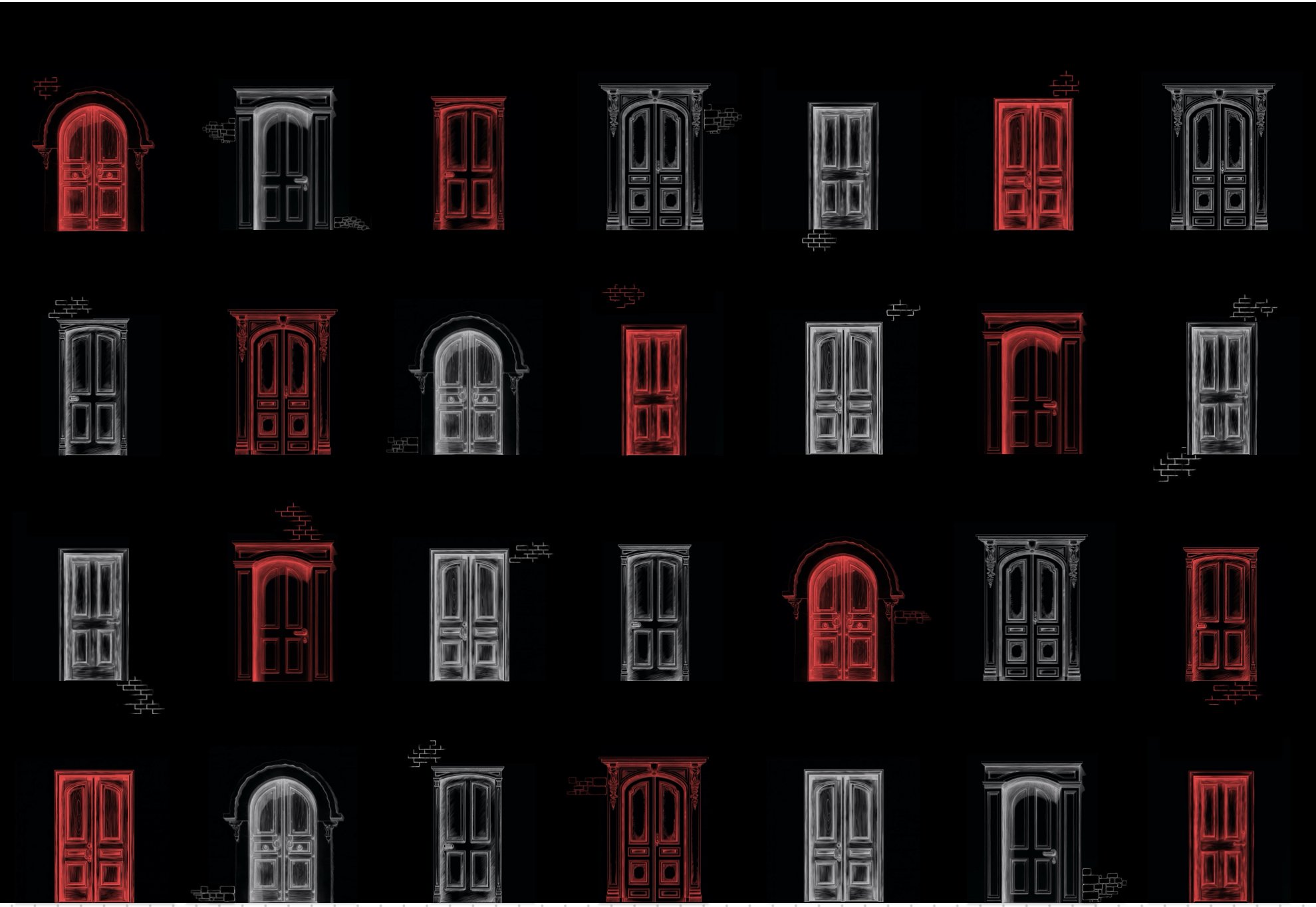
“When I used to read fairy tales, I fancied that kind of thing never happened, and now here I am in the middle of one!”
— Chapter 4, ‘The Rabbit Sends in a Little Bill’, from Lewis Carroll’s Alice’s Adventures in Wonderland (1865)

1:50 Model

The photographs below illustrate the use of rotating Greek periaktoi. These upright triangular prisms spin simultaneously, with different scenes painted on each side, in order to produce three distinct stage environments (a grassy landscape, a grid of doors, and a starry sky), behind the combination of two-dimensional perspective scenery and three-dimensional Ionic columns. Seven periaktoi were utilised in this model, placed between each of the upstage columns.

Storyboard

Set & Lighting Concept Storyboard


























